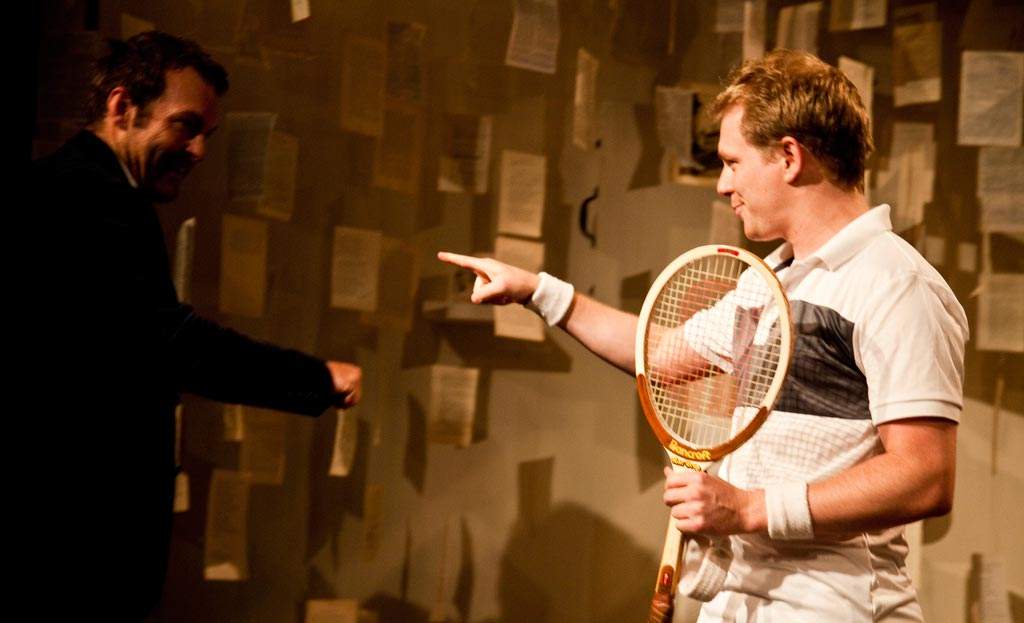Wittenberg – Brevity Theatre Co
The kind of literary mash-up that Tom Stoppard fans would adore.
Overview
As if Hamlet didn’t have enough to deal with under his dead father’s duress, he’s back for a second round. Actually, that should be match. American playwright David Davalos transports Denmark’s troubled prince to Germany, October 1517. Having spent the summer in Poland, studying under an unknown yet radical astronomer by the name of Copernicus (yes, the Copernicus), he returns to Wittenberg University, stricken by a crisis of faith: to believe or not to believe? His usually ace tennis skills are as unreliable as his Shakespearean mother’s fidelity and he’s utterly undecided as to which major he should take.
To complicate matters, two legendary academics are vying for his commitment. One is theology professor Martin Luther, frustrated, constipated and on the verge of inadvertently inspiring the Protestant Reformation. The other is philosopher Dr Faustus, heretic, hedonist, psychoanalyst, part-time pub musician and desperate, deluded lover of the non-committal Helen.
Yes, it’s a crazy world. Dubbed as the ‘story-behind-the-stories’ of Hamlet, Marlowe’s Dr Faustus and the Protestant Reformation, Wittenberg is the kind of literary mash-up that Tom Stoppard fans would adore. Davalos dives into the most tormenting of spiritual and philosophical questions, yet his sense of the absurd is such that we’re never more than a moment away from a ridiculous plot twist, witty textual reference or underhanded wordplay. (During Hamlet’s encounter with Laertes in a Wittenberg-versus-Paris tennis match, the judge calls, “An out! A very palpable out!”).
Benjamin Brockman’s set and lighting design embraces the play’s wordy world. Strings of pages ripped from referenced texts hang from the ceiling, like a papery forest. Dr Faustus keeps his father’s skull visible on a shelf a reference to Hamlet’s famous graveyard scene. Four empty window frames fill the back wall. Simple effects revolving lights that spin the pages into silver-tipped chaos and silhouetting during soliloquies highlight moments of heightened psychological agony.
Under Richard Hilliar’s direction, the Brevity Theatre cast tackles Wittenberg with brio. It’s a tough script, demanding complex diction and on-the-mark timing. David Woodland delivers a charismatic and rebellious take on Faustus, while Nick Curnow is a commanding yet deeply perturbed Luther. Hilliar makes the most of the contrast. Their exchanges whether comical or filled with ire are edgy and real. As the distressed Hamlet, Alexander Butt is suitably bewildered and angst-ridden. Lana Kershaw turns her multifaceted hand to three different roles a sassy, flirtatious barmaid; an aptly tranquil Virgin Mary; and a much-desired yet immovable Helen.
As the newly formed Brevity Theatre's second production (their first, Fully Committed, played at last year's Fringe Festival), Wittenberg is further evidence that Sydney would do well to roll out the red carpet in celebration of the company’s arrival. Having set out with the mission of “producing theatre told in a sharp and simple way”, they’re doing a fine job of achieving their intention.





